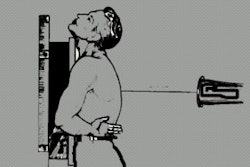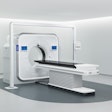CHICAGO - After following up 1,200 cases, German researchers from the University of Halle in Engledorf found stereotactic vacuum breast biopsies were able to spare patients from diagnostic surgery. Dr. Kerstin Rotter presented the results of her group’s study at the RSNA meeting on Tuesday.
"All lesions that are diagnosed as malignant or borderline malignant are surgically treated," she said. "But over 99% of the benign lesions can be followed-up after stereotactic vacuum breast biopsy."
Out of 1,200 lesions in the study sample, 948, or 78%, were found to be benign. To date, no false negatives have been found in that group, Rotter said. Three lesions that were initially diagnosed as benign with biopsy were referred to surgery because of fibroadenoma or residual microcalcifications.
Based on a follow-up schedule that has ranged from six months to 60 months, the investigators determined that stereotactic vacuum biopsy completely removed lesions in 61% of cases and partially removed lesions in 29%. In 96% of the cases, the biopsy procedure did not result in a scar. In one case (0.3%), there was some scarring, which was determined to be a hematoma, she said.
"Our conclusion is that a benign diagnosis by vacuum biopsy is very reliable," Rotter said.
Other investigators have reported similar positive results. At Georg August University in Gottingen, Germany, an evaluation of stereotactic vacuum core biopsy of clustered microcalcifications (BI-RADS 3) was performed. In 78 out of 82 cases, the lesion was completely or largely removed (RoFo. Fortschritte auf dem Gebiete der Rontgenstrahlen und der neuen bildgebenden Verfahren, August 2001, Vol.173:8, pp. 696-701).
In another study out of Memorial Sloan-Kettering Cancer Center in New York City, the authors compared various breast biopsy methods including those performed with an 11-gauge, vacuum-assisted stereotactic probe. In this case, stereotactic 11-gauge vacuum-assisted biopsy was significantly more likely to spare a surgical procedure, as well as yield a savings of $315 per case compared with diagnostic surgical biopsy (American Journal of Roentgenology, July 2001, Vol.177:1, pp. 165-172).
By Shalmali Pal
AuntMinnie.com staff writer
November 27, 2001
For the rest of our coverage of the 2001 RSNA meeting, go to our RADCast@RSNA 2001.
Copyright © 2001 AuntMinnie.com



















